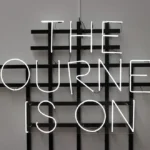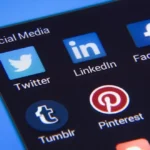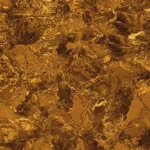Right, gather ’round, product aficionados! I’ve been diving deep into the world of augmented reality (AR) try-ons on Facebook, and honestly, it’s a goldmine of user data just waiting to be tapped. We’re talking about revolutionising how we understand customer preferences, refine product designs, and personalise marketing efforts, all thanks to this little tech marvel.
Imagine This: The Facebook Try-On Experience
First, let’s set the stage. We’re not just talking about pretty filters here. Think about a user scrolling through their Facebook feed and spotting an advert for a new line of sunglasses. Instead of just seeing a static image, they can tap a button and bam, the sunglasses virtually appear on their face using Facebook’s AR capabilities. Or perhaps they’re browsing for a new sofa and can use AR to visualise how it would look in their living room. This isn’t just a gimmick; it’s about giving the customer agency, an opportunity to connect with your brand in an engaging and powerful way. We can go further than that though. How about the user can change the colour and style of the sofa or even change the room design too and see how it looks?
The Data Bonanza: What We’re Collecting
This is where it gets really interesting. While users are playing around with these AR try-ons, Facebook is quietly (and ethically, of course, with proper opt-in agreements!) collecting a treasure trove of data. We’re talking:
- Most Popular Items: Which products are users trying on the most? Which colours or styles are generating the most interest? This gives you instant insight into trending products and customer desires.
- Duration of Interaction: How long are users spending with each AR experience? A longer duration suggests a higher level of engagement and interest in the product. If people only try a product on for a second, it might mean it does not fit properly or the colour/style is unappealing.
- Shares and Saves: Are users sharing their AR try-on photos or videos with friends? Are they saving the products to their wish lists? This is a strong indicator of purchase intent and brand advocacy.
- Demographic Data: Combined with Facebook’s existing demographic information, we can start to understand which customer segments are most interested in which products. This allows for laser focused marketing.
- Facial Feature Data: (With explicit user consent, of course) Using advanced facial recognition tech, we can start to identify what facial shapes or colouring are most popular with each item. This allows us to improve the model for new users and give a better approximation of what it looks like on their face.
Turning Data into Action: Product Development
Now, how do we actually use this data to improve our products?
- Refining Designs: Let’s say the AR try-on data reveals that a particular style of dress is consistently being tried on but rarely shared or saved. This could indicate that users are drawn to the initial appearance but find something lacking in the design when they see it virtually on themselves. Maybe the fit is unflattering or the colour doesn’t quite work. This feedback is invaluable for tweaking the design and making it more appealing.
- Optimising Fit and Sizing: Analysing the duration of interaction and user feedback can highlight potential issues with fit or sizing. If users are constantly adjusting the virtual product, it could suggest that the sizing is inaccurate or the AR model needs refining.
- Exploring New Product Ideas: Pay attention to the products that are generating the most buzz. This could be a sign that there’s a gap in the market for similar products or variations on existing designs.
Powering Up Marketing Campaigns
AR data can also transform your marketing strategy:
- Personalised Recommendations: Based on a user’s past AR try-on experiences, you can serve them highly relevant product recommendations. Someone who’s tried on several pairs of blue sunglasses might be interested in your new collection of blue-tinted shades.
- Targeted Advertising: Use demographic data and product preferences to create highly targeted Facebook ad campaigns. Show different products to different user segments based on their AR try-on history. For example, someone who has tried on various styles of outdoor furniture could get ads with discount codes.
- A/B Testing with AR: Use AR experiences to A/B test different product variations or marketing messages. Which version generates the most engagement and conversions? This is much easier and faster than traditional A/B testing methods.
A Practical Example
Let’s say you’re selling cosmetics. Using Facebook AR, customers can virtually try on different shades of lipstick. The data shows that a particular shade of red is hugely popular in the try-on phase but has a low conversion rate. Further investigation reveals that users are commenting that the shade appears different in the AR experience compared to the actual product. This highlights an issue with the AR model’s colour accuracy, allowing you to correct it and improve the customer experience.
A Final Overview: Pulling it All Together
Think of Facebook’s AR try-on features as a continuous feedback loop. By carefully analysing the data generated, you can gain a deeper understanding of your customers, refine your product designs, and personalise your marketing campaigns with an ease that has never been possible before. It’s about creating a more engaging, immersive, and ultimately more rewarding experience for your customers, while simultaneously driving growth for your business. So, get creative, get analytical, and get ready to see the power of AR data in action. It’s time to make your products truly shine.











